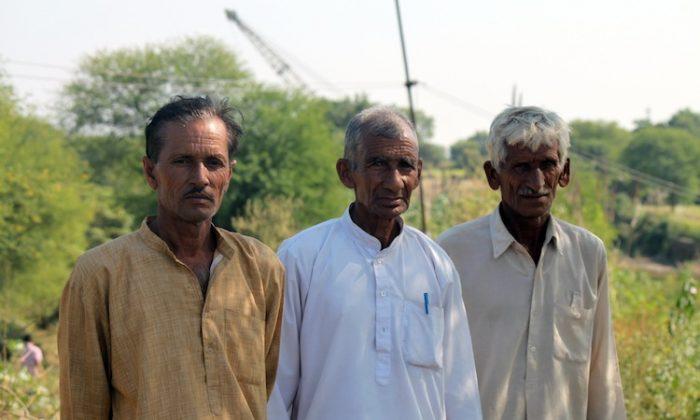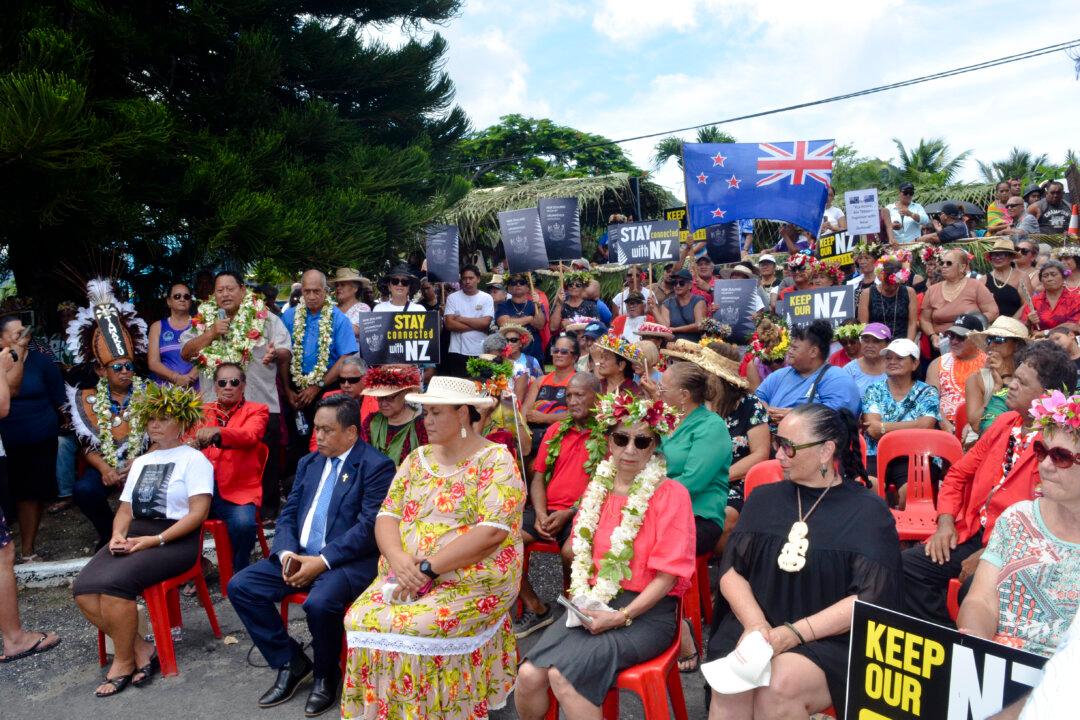CHAK CHANGA, India—Rich, fertile land is a farmer’s joy, but for farmers on the border with Pakistan in Jammu State, India, tending their high-yield fields has become a source of daily anxiety.
The Indian government erected a fence to prevent arms smuggling and infiltration of armed intruders from Pakistan. The fence is not, however, directly on the border. It cuts into Indian territory—right through farmers’ fields, severing farmers from their livelihoods.
Floodlights run along the fencing, which extends approximately 500 miles from the Akhnoor region in Jammu to Rajasthan further south.
“Villagers can reach their fields only through a gate, which remains open from 9 a.m. to 4 p.m.,” said Ramesh Chandar Sharma, a farmer and resident of the village Ganguchak.
In and around Ganguchak, life looks better than in many villages in India.
A few big, fancy, and colorful houses are scattered alongside neatly laid mud huts. A rich paddy harvest surrounds the homes. Women and men work busily to harvest the healthy crop. Children walk to school in their blue and white uniforms. Gujjars (members of a pastoral nomadic tribe camping nearby) carry fodder on their bullock carts.
The idyllic scene is pervaded, however, by anxiety. In the neighboring village of Chak Changa, a mile from Ganguchak, a group of elderly men gathered in a general store to share their concerns. They asked themselves why the fencing would run through their fields instead of directly along the border—for the authorities have not given them a clear answer.
“The only reason we are given about why the fence was laid inside people’s fields is ’security concerns,'” said Sunil Sharma, chairman of the Speech India Environment Foundation, which has been working with the youth on this border for the past 10 years.
“However, it has made life extremely challenging particularly for those who have most of their land on the other side of the fence,” he said. “We have observed that the number of children going for higher education in these villages is very less, as they do not have adequate resources to pursue education.”
The fence is just a five-minute walk, past an army barrack, from Chak Changa. On both sides of the fence, sarkanda (tall grass with big, white inflorescence) bends to the breeze. Cows on the other side of the fence graze in Pakistani territory.

Bal Krishna, 65, the Lambaddar (nominated head) of Chak Changa and the adjoining village Chhan Tanda, told of a recent run-in with border security.
“A week ago, the Indian Border Security Force personnel had stopped 30–40 men who were returning after cutting grass from their land from across the fence,” Krishna said. The army had found a tunnel dug across the border at the village of Chadwal. They tightened security, inferring that illegal activities were taking place through the tunnel.
Krishna felt protective of the men, and talked to the guards on their behalf. Overwrought from the tensions along the border, Krishna felt desperate.
“I told them that I'll self-immolate if anyone of them is found guilty,” he recalled.
Sipping fresh milk tea, the elders gathered in front of Krishna’s general provisions shop shared that many times the Border Security Force personnel stopped them from going to the fields for reasons unexplained.
As per the security provisions, whenever farmers go across the fence to work on their land, three to four security personnel must accompany them, the farmers have been told.
“They are lazy sometimes and don’t want to accompany the farmers, so they stop them at the gate [and do not allow them to cross],” said one of the farmers. “It depends who is on duty on the gate. Good personnel do good, and lazy create problems,” said another.
People who live on the India-Pakistan border mostly subsist on agriculture. Their fields, which served as a battleground in the 1971 war between the two south-Asian neighbors, are the only source of income for many of them.

Nank Chand, 80, is president of the Border Union Trust that has played a great role in taking the grievances of the people on this border to various government departments. Chand described the detrimental effects on the crops.
“Earlier, we used to grow both paddy and wheat on the land on the other side of the fence. But [the] paddy crop every time was spoiled by hordes of wild pigs from across the border,” Chand said. “They not only spoil the crop, but also dig a lot of earth. Since the fence was erected, we can grow only one wheat crop a year, as we can no longer protect and properly tend to our land.”
Chand estimates that about 300 acres of fertile land in the village of Chak Changa lies on the other side of the fence. “On this land we can grow a rich harvest without using any fertilizers, but the situation at this border is very uncertain and creates many challenges,” Chand said.
“Sometimes when we take agricultural machines on contract and they are stopped at the gate and not allowed to go further because of security reasons, we lose our money. We hire the contractor and he wants his money even if he spends his whole day waiting for security clearance at the gate and does no work,” Chand said.
Access to fields beyond the fence becomes impossible whenever the tension between India and Pakistan escalates and whenever there is firing at the border. The villagers report that it does not come to that point frequently.
Although the fields of Chak Changa and Ganguchak are fertile, they already bear the scars of battle. Current fighting, as well as the war in 1971, has left mortar shelling behind, which renders portions of the land infertile. Effort is required to refill and reclaim these areas.
Villagers report livestock casualties. Local farmer Ramesh said, “In the last few years, my fields have borne three mortar fires.”





